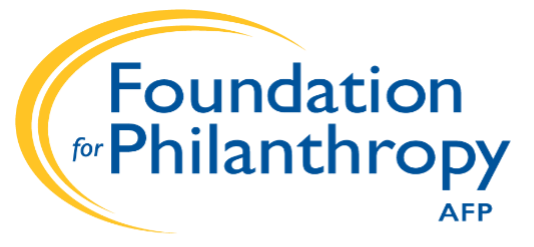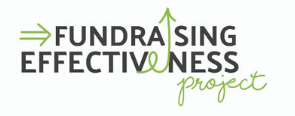COVID Era Fundraising Stalls as Donations Soften and Donors, Retention Rates Fall in First Quarter 2022

While fundraising in the United States increased by 2.2%, the donor pool continued to shrink as large gains in donors from 2020 that were lost in 2021 have stalled again this year, according to the Fundraising Effectiveness Project’s (FEP) 2022 First Quarter Fundraising Report.
 The Fundraising Effectiveness Project (FEP) is a collaboration among fundraising data providers, researchers, analysts, associations, and consultants to empower the sector to track and evaluate trends in giving. The project offers one of the only views of the current year’s fundraising data in aggregate to provide the most recent trends for guiding nonprofit fundraising and donor engagement. The FEP is administered by the Association of Fundraising Professionals (AFP) Foundation for Philanthropy in collaboration with GivingTuesday.
The Fundraising Effectiveness Project (FEP) is a collaboration among fundraising data providers, researchers, analysts, associations, and consultants to empower the sector to track and evaluate trends in giving. The project offers one of the only views of the current year’s fundraising data in aggregate to provide the most recent trends for guiding nonprofit fundraising and donor engagement. The FEP is administered by the Association of Fundraising Professionals (AFP) Foundation for Philanthropy in collaboration with GivingTuesday.
The 2022 First Quarter Fundraising Report compares charitable giving in the first quarter of 2022 to the first quarter of 2021. The report found that the number of donors decreased by 5.6%, and the donor retention rate, the percentage of donors who gave in 2021 and then gave again in 2022, decreased by 6.2% year-over-year.
“In some ways, we shouldn’t be surprised at the data,” said Mike Geiger, MBA, CPA, president and CEO of the Association of Fundraising Professionals’ Foundation for Philanthropy. “Charitable giving overall has been extremely strong in recent years—the FEP calculated a growth rate in giving of 11% from 2019 to 2021 with the number of donors basically remaining flat. That high level of growth in giving was unlikely to continue, and so these numbers reflect the retrenchment in donor participation. But what is concerning is the impact of inflation, as the FEP numbers are in actual dollars. So, when inflation is accounted for, the 2.2% growth rate in charitable giving is less impactful for organizations.”
While giving increased by 2.2% this year, driven by large donors, the number of donors decreased by 5.6%, primarily due to poor donor acquisition particularly among small donors. The big factor in the fall of the donor retention rate (-6.2%) was the drop in new donor retention (the percentage of donors who gave to a charity for the first time last year and gave again to the same charity this year); that decrease must also be understood in the context of incredibly high rates of new donor retention in 2021. In the report, the first quarter of 2022 is being compared to 2021’s first quarter, which saw the highest ever growth in first quarter new donor retention rates.
“While people give at all times, a majority of donations come in the last quarter of the year,” said Jon Biedermann, chair of the Fundraising Effectiveness Project and president and CEO of The Biedermann Group. “But that does not mean we shouldn’t be concerned about what the data is showing or shouldn’t prepare for significant challenges, some of which organizations are already grappling with like inflation and weakening consumer confidence.”
FEP analysts were quick to point out that first quarter numbers are not always indicative of how the entire year will be in terms of charitable giving levels and participation. Data from the first quarter of 2022 about the types of charities receiving monetary gifts also points to a return to “normalization” and reversal away from COVID-giving trends experienced over the past two years. COVID strongly influenced fundraising behaviors, and cause-based analysis shows that the pandemic’s influence has begun to reverse.
“The focus areas needed now are evergreen, yet nonetheless critical: donor acquisition, donor retention, and broadening donor bases,” said Woodrow Rosenbaum, chief data officer at GivingTuesday. “Know all of your donors, share compelling stories about the impact of their donations, and clearly demonstrate the impact on the community. Charities can continue to be resilient in 2022, but they need to recession-proof themselves through strategic fundraising efforts. We've seen that organizations that build and maintain a broad base of support, including grassroots, everyday givers who give at a range of levels, are much more resilient to economic shocks.”
About the Report
The FEP 2022 First Quarter Fundraising Report is available for free at https://afpglobal.org/fepreports, with a free online dashboard available at http://data.givingtuesday.org/fep-report.
The data analysis includes giving details from 9,618 nonprofit organizations based in the U.S. as a subset of the Fundraising Effectiveness Project. The FEP’s database of organizations is made up of organizations that raise between $5,000 and $25 million.
In 2021, the FEP implemented a number of methodology changes to provide a better representation of the ‘typical’ experience of organizations and granular trends in donation patterns.
The Fundraising Effectiveness Project
The Fundraising Effectiveness Project publishes quarterly and annual reports that examine key fundraising metrics, serving as a benchmark for nonprofit executives, development staff and researchers. The Fundraising Effectiveness Project and the Growth in Giving database are both administered by the Association of Fundraising Professionals Foundation for Philanthropy and The GivingTuesday Data Commons.
The Growth in Giving database is the world’s largest public record of donation activity, with more than 204 million donation transactions, and is continuously updated by leading fundraising software thought leaders (in alphabetical order) Bloomerang, DonorPerfect, Keela, and Neon One. Additional partners include the 7th Day Adventists, The Biedermann Group, DataLake Nonprofit Research, and Bonterra. For more information and how you or your fundraising software provider can participate, please visit The Fundraising Effectiveness Project.


